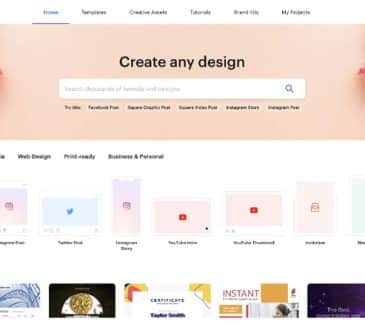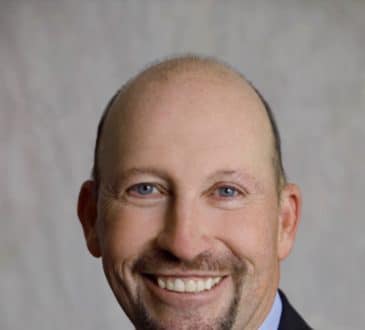You Have to Build It To Make It – Why Genius Can’t Be Faked

Much has been written about Elizabeth Holmes and her Theranos venture. Many analysts note that Theranos failed because the founder embraced the fake it to make it maxim. This piece will attempt to do three things. First, explain the roots of the maxim. Second, illustrate the limits of the maxim. Third, propose an alternative maxim for business leaders.
The Roots of the Maxim
Unsurprisingly, many entrepreneurs and executives embrace the fake it to make it maxim because they all know situations in which the philosophy seems to pay off. One of the most prominent examples often cited is the story of the inventor – Thomas Edison. In the autumn of 1878, Thomas Alva Edison invented a light bulb, but he could not keep it lit for more than a few minutes. He could not control the temperature of the light bulb’s internal filament, meaning that the filament melted in a few minutes. Edison announced to the press that his latest invention, the incandescent light bulb, was complete. “I have it now,” he told the New York Sun, boasting that “everybody will wonder why they have never thought of it.” While working on the solution to the temperature regulation problem, he set a date to demonstrate his light bulb to reporters (Burton, 2023).
Edison came up with a plan to deceive the press. He set up private demonstrations for reporters, whereby they would each receive a brief, private demonstration of the new light bulb’s capacities at his Menlo Park laboratory. They marveled at what Edison had achieved for a few minutes before they were ushered away before the filament melted. The press lauded the clear and beautiful radiance of the light bulb.” The press pronounced the invention “perfect.” It took Edison a whole year to solve the temperature regulation problem. On New Year’s Eve in 1879, about one year after the press demonstration—Edison hosted another, larger public display, this time with a bulb, with a carbon filament, that didn’t burn out. Clearly, Edison could be said to have faked it until he made it (Burton, 2023).
A second historical example that illustrates the power of the maxim is the story of Bill Gates, Paul Allen, Steve Ballmer, and IBM. In late July 1980, IBM sent a team led by Jack Sams to speak with Bill Gates. One of the most popular operating systems at that time was CP/M. The IBM team visited Bill Gates several times because they believed he had rights to the CP/M software. Only after the third visit did they discover that Microsoft had no rights to sell or even license the CP/M operating system. The team also found that the CP/M software was an 8-bit system, not a 16-bit one that IBM needed for its secret PC project. The developer of the operating system was Mr. Gary Kildall. Bill Gates connected the IBM team to Kildall, but the deal fell through. First, IBM wanted to pay a flat $200,000 license fee to get a royalty-free license in perpetuity, but Gary Kildall wanted more (Forbes Magazine, 1997). Furthermore, IBM wanted Kildall to develop a 16-bit version of the software on a 12-month schedule that IBM required, and Kildall was unwilling to do so (Wallace and Erickson, 1992). In desperation, IBM turned to Bill Gates to request a proposal for Microsoft to deliver an operating system and four languages, BASIC, COBOL, FORTRAN, and Pascal, within a year. Microsoft had none of the deliverables. However, on September 28, 1980, Gates and Paul Allen decided to commit. They wrote a proposal and traveled to IBM to present how they would achieve the feat. The presentation went well. The executives were persuaded that Microsoft could do the job. In early November 1980, the paperwork was signed. It is clear that given the limited experience of Microsoft in the area of operating systems, most of what Bill Gates had to do was to learn as fast as he could and to fake it until Microsoft made it, by getting the deal.
After signing the deal, Bill Gates, Steve Ballmer, and Paul Allen had to find a way to solve the operation systems problem. Unexpectedly, they got a call from a company called Seattle Computer Products (SCP). They learned that Tim Paterson had created a new 16-bit operating system called 86-QDOS. The 16-bit operating system would work for the IBM deal. Bill Gates and his partners immediately started negotiations to license the software. In November 1980, Microsoft licensed a version of 86-DOS from SCP for $25,000. This non-exclusive deal permitted SCP to still sell 86-DOS and license it to other OEMs. This deal enabled Microsoft to show 86-DOS to IBM. Once it was clear that IBM would license 86-DOS, Microsoft hired its primary developer, Tim Paterson, and purchased the operating systems outright for $50,000 (Lunduke, 2022). Microsoft promptly licensed the software to IBM. In sum, Gates used faking to Microsoft’s advantage in its dealings with IBM. He faked the confidence that creating a 16-bit operating system in a short time would be feasible. He faked Microsoft’s true objective by suggesting to SCP that Microsoft’s goal was to license the operating system software to other companies. Gates’ ultimate goal was to acquire and license the software to one company, IBM. In other words, faking matters and could enable enormous profits for an entrepreneur who leverages it well. But the crucial question is this: Are the results of faking it so universal and predictable that one can develop a maxim around it? Perhaps not.
Few Reasons Why Faking it to Make it is a Flawed Maxim?
A deeper analysis of these stories raises doubts about the claim that the faking it to make it maxim largely explains the successes of either Edison or Microsoft. The first reason why executives should be wary of this maxim is because it is based on flawed logic. A good maxim typically has a compelling logic at its core. For example, a firm might embrace the maxim that it must “cut cost and waste to make it.” Another might have the maxim that one must satisfy the customer’s needs to make it. Both of these maxims share a common characteristic. Namely, they imply that focused efforts to improve business factors and services would improve business results. In contrast, faking it to make it is grounded in flawed logic. Namely, it suggests that one can make it by faking one’s lack of business competence. It is unreasonable to propose that an individual could become a seasoned mechanic or doctor simply by pretending to possess the skills they lack. Hence, faking it to make it is not a reasonable maxim because it is grounded on flawed logic.
Second, the maxim is also problematic because it emphasizes or endorses deception or misinformation as a means to an end. It essentially recommends that one should be deceptive or unethical if it serves the short-term objectives of a company. This is rarely a good recommendation because unethical decisions become reference points for future unethical choices. Over time, the isolated unethical decisions create an unethical organizational culture. Hence, the negative cumulative impact of endorsing fakeness in business decisions is another reason to shun the fake it to make it maxim.
The third reason why executives should reject the fake it to make it maxim is because the introduction of any system of fakeness in an organization often requires the creation of a significant internal culture of secrecy, surveillance, and unhealthy control. Consider what Elizabeth Holmes had to do at Theranos (Hartmans, Jackson, Haroun, and Tabahriti, 2023). Her obsession with secrecy touched every aspect of Theranos. In its first decade, Theranos operated in stealth mode. Holmes took three former Theranos employees to court, claiming they had misused Theranos trade secrets. She asked anyone who visited the company’s headquarters to sign non-disclosure agreements before being allowed into the building and had security guards escort visitors everywhere — even to the bathroom. Though Holmes took investors’ money, she had an understanding with the investors that she did not have to reveal to them how Theranos’ technology worked. Finally, Holmes had the controlling shares in the company, so she had the final say in every major decision. In other words, the CEO’s commitment to embrace a fake technology product required her to deploy secrecy protocols, non-disclosure agreements, and threats of lawsuits. Though these were presented to the stakeholders as necessary means to protect the intellectual property of Theranos, the schemes were also used to prevent the board, investors, and visitors from learning about and disclosing the truth about the fakeries to the outside world. Namely, Theranos had not built the technology the founder claimed they had built.
Does Faking It Have a Role in Business Success?
Knowing the disaster that the “fake it to make it” maxim has had on Theranos, one has to pose the question: Is the “fake it to make it” maxim even relevant in business? The best answer is that it does matter but for specific and limited results only. The historical accounts of great war strategists reveal that faking an attack could divert an opponent’s plans, which grants the strategist the advantage of surprise. Properly faking it can also serve the same effect in a business context. A business executive could strike a deal with another company to create an impression in the minds of other executives that she/he is interested in a particular market or has prioritized a specific investment area. Knowledgeable inventors and seasoned investors know that announcements, divestitures, and investment actions from large firms, such as Facebook, Google, and Amazon, could literarily make or break the return-on-investment expectations, even if such actions are “fake.”
The problem with the fake it to make its maxim is that it grossly overstates what an individual can achieve by faking things. The rewards of faking things are typically more modest. One can fake things to impress or fool others temporarily. For example, an entity could send a fake signal to the outside ecosystem that it is capable of and willing to mount an offense or defense if provoked by an attack. In this latter case, we have the maxim, “You have to fake it to gain time.” This latter maxim is a more realistic statement of what faking it gains those who wield it. Properly used, one can fake it to gain time. If one excludes the cases of random chance or luck, faking things is rarely the root cause of business success. Edison’s “fake it to make it” scheme yielded the following results. First, the scheme highly impressed reporters, who gave Edison and his project glowing media coverage. Second, the faking scheme bought Edison much-needed time to solve the temperature regulation issue of the initial light bulb prototype. Nobody with a complete understanding of Edison’s body of inventions could claim that he made it because he faked it.
I derived two maxims from Thomas Edison’s life. First is this, “you have to build it to make it.” Edison is regarded as one of the most influential inventors of all time because of what he built, not because of what he faked. A second maxim is derived from Edison’s famous maxim: Genius is 1% inspiration and 99% perspiration. One can loosely interpret this as “you must perspire to build it.”
Why did Theranos Fail?
Theranos’s business model was based on the genius idea that the running of blood tests could be decentralized and democratized. A small blood testing machine will be placed in a home or hospital, which could run blood tests in hours rather than days. Furthermore, the machine would run hundreds of tests with a tiny blood sample. While the idea was compelling, and the biography of Elizabeth Holmes attracted notable investors and lots of funding for the venture, after ten years of its existence, Theranos was unable to build a testing machine that would achieve this new future. For ten years, Elizabeth tried to fake it. The company promoted a non-functional machine as fully functional. Elizabeth instructed her staff to take small blood samples from people, while authorizing them to dilute the blood samples behind the scenes. The company also used traditional methods behind the scenes to run blood tests while mispresenting to their stakeholders that they were using Theranos’ Edison equipment.
Elizabeth Holmes did many things to push the image of herself as being the next “Steve Jobs.” She wore all black; she hired Steve Job’s former employees and Steve Job’s ad agency (Geigel, 2022). She even called her equipment “the iPod of Healthcare”. Theranos failed because it violated two of Edison’s maxims. First, you have to build it to make it. Second, you have to sweat to build it. Instead, the Theranos executive acted like the company could overcome its technology development failure by faking it. The company learned that a company can rarely make it by faking it if one has not built something. Contrary to popular opinion, the most salient maxim we can learn from Thomas Edison is the maxim: you must build it to make it. Theranos closed down on September 4, 2018. The venture failed because, ultimately, genius can not be faked.
Written by Adenekan Dedeke.
Have you read?
Revealed: Countries With Most Submarines (2023).
Scorecard: These are the world’s top manufacturing countries, 2023.
Ranked: These Are The Countries With The Highest Inflation Rate.
Ranked: 20 of the world’s youngest billionaires in 2023.
Countries and Territories Without Standing Military Forces.
Healthcare Shortage: Countries that need nurses and midwives the most, 2023.
Add CEOWORLD magazine to your Google News feed.
Follow CEOWORLD magazine headlines on: Google News, LinkedIn, Twitter, and Facebook.
This report/news/ranking/statistics has been prepared only for general guidance on matters of interest and does not constitute professional advice. You should not act upon the information contained in this publication without obtaining specific professional advice. No representation or warranty (express or implied) is given as to the accuracy or completeness of the information contained in this publication, and, to the extent permitted by law, CEOWORLD magazine does not accept or assume any liability, responsibility or duty of care for any consequences of you or anyone else acting, or refraining to act, in reliance on the information contained in this publication or for any decision based on it.
Copyright 2024 The CEOWORLD magazine. All rights reserved. This material (and any extract from it) must not be copied, redistributed or placed on any website, without CEOWORLD magazine' prior written consent. For media queries, please contact: info@ceoworld.biz
SUBSCRIBE NEWSLETTER








